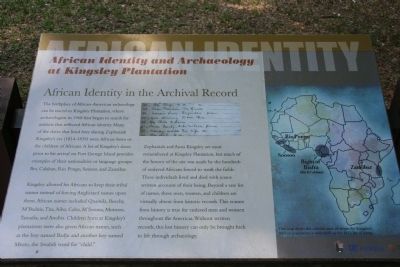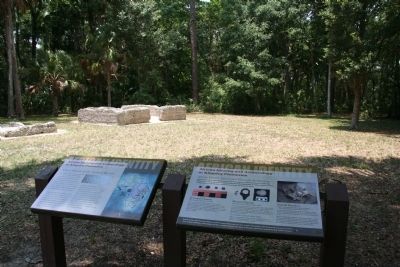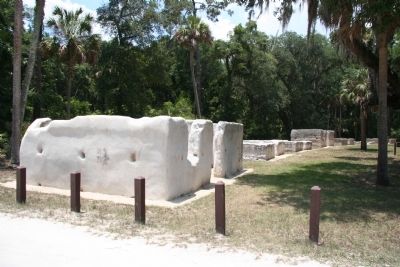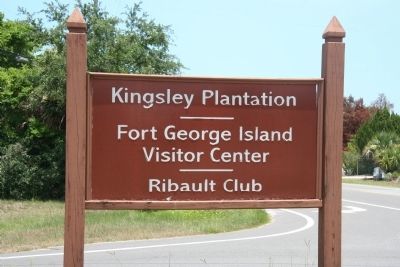Fort George Island near Jacksonville in Duval County, Florida — The American South (South Atlantic)
African Identity
African Identity and Archaeology at Kingsley Plantation
— African Identity in the Archival Record —
Kingsley allowed his Africans to keep their tribal names instead of forcing Anglicized names upon them. African names included Quamila, Beechy, M'Badnie, Tita, Aibo, Cabo, M'Sooma, Motorro, Tamafia, and Anobia. Children born at Kingsley's plantations were also given African names, such as the boy named Badju and another boy named Mtoto, the Swahili word for "child."
Zephaniah and Anna Kingsley are most remembered at Kingsley Plantation, but much of the history of the site was made by the hundreds of enslaved Africans forced to work the fields. These individuals lived and died with scarce written accounts of their being. Beyond a rare list of names, these man, women, and children are virtually absent from historic records. This erasure from history is true for enslaved men and women throughout the Americas. Without written records, this lost history can only be brought back to life through archaeology.
Erected by National Park Service.
Topics. This historical marker is listed in these topic lists: African Americans • Agriculture • Settlements & Settlers. A significant historical year for this entry is 1968.
Location. 30° 26.212′ N, 81° 26.313′ W. Marker is near Jacksonville, Florida, in Duval County. It is on Fort George Island. Marker can be reached from Palmetto Avenue, 2.1 miles north of Fort George Road, on the left when traveling north. This historical marker is located in a national park. The historical marker is in a very remote area that is reached by traveling a considerable distance on an unpaved dirt road. To get there one must turn north, off of the Florida State Route 1A (Heckscher Road), onto Fort George Road, and then traveling about 0.6 miles to the intersection of Fort George Road and Palmetto Avenue, were you turn north on Palmetto Avenue and travel to the end of this road to reach the historical marker. The turn-off from state route 1A can be identified by the "Kingsley Plantation, Fort George Island Visitor Center" sign that is situated right at the turnoff point. Touch for map. Marker is in this post office area: Jacksonville FL 32226, United States of America. Touch for directions.
Other nearby markers. At least 8 other markers are within walking distance of this marker. A different marker also named African Identity (here, next to this marker);
Slave Cabins (within shouting distance of this marker); a different marker also named Slave Cabins (within shouting distance of this marker); a different marker also named Slave Cabins (about 300 feet away, measured in a direct line); a different marker also named Slave Cabins (about 300 feet away); a different marker also named Slave Cabins (about 300 feet away); a different marker also named Slave Cabins (about 300 feet away); Slaves Cabins (about 700 feet away). Touch for a list and map of all markers in Jacksonville.
Also see . . .
1. Kingsley Plantation. This is a link to information provided by the National Park Service. (Submitted on March 13, 2011, by Dale K. Benington of Toledo, Ohio.)
2. Kingsley Plantation. This is a link to information provided by Wikipedia, the free encyclopedia. (Submitted on March 13, 2011, by Dale K. Benington of Toledo, Ohio.)
Credits. This page was last revised on February 3, 2023. It was originally submitted on March 13, 2011, by Dale K. Benington of Toledo, Ohio. This page has been viewed 1,037 times since then and 15 times this year. Photos: 1, 2, 3, 4. submitted on March 13, 2011, by Dale K. Benington of Toledo, Ohio.



